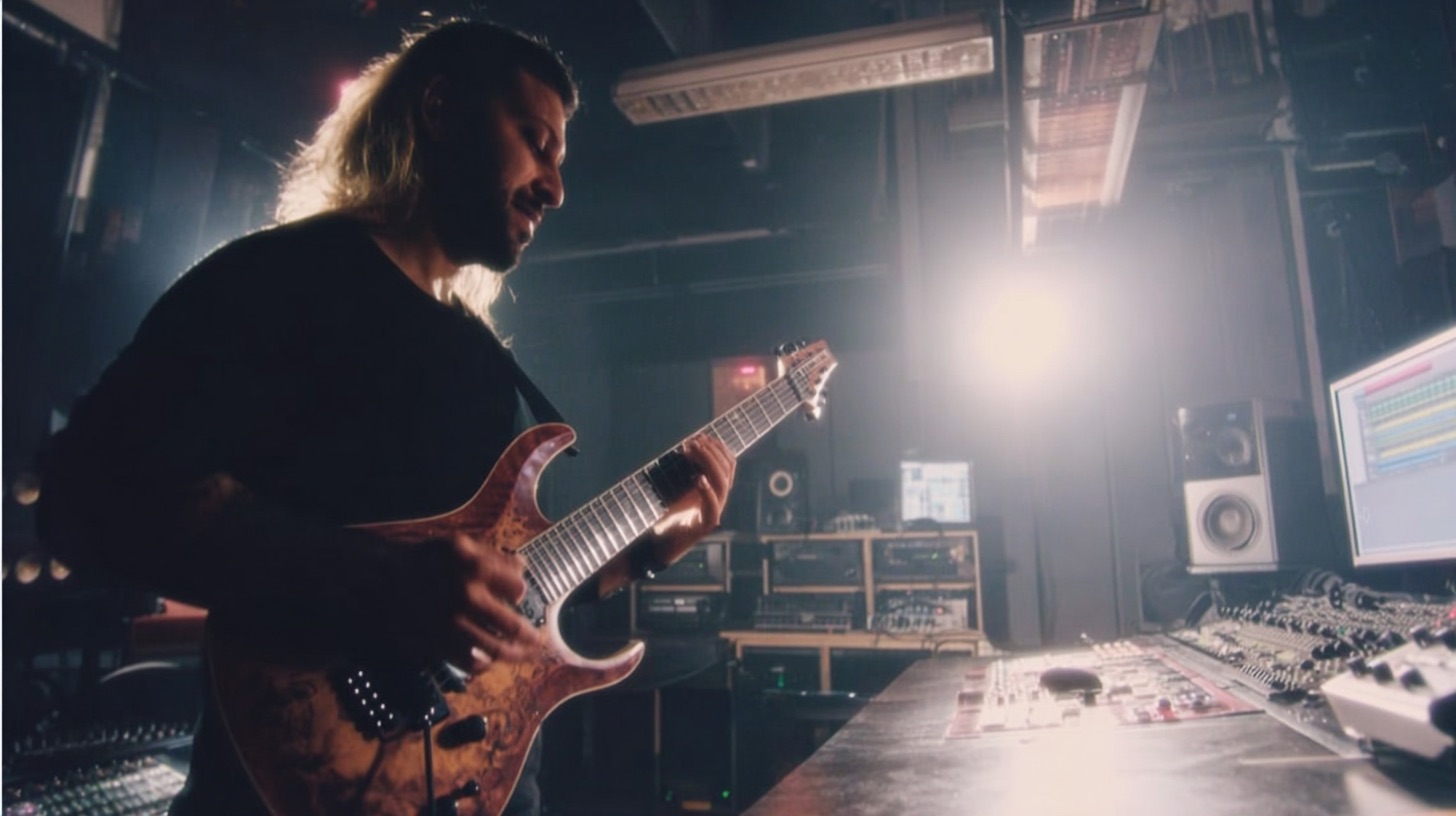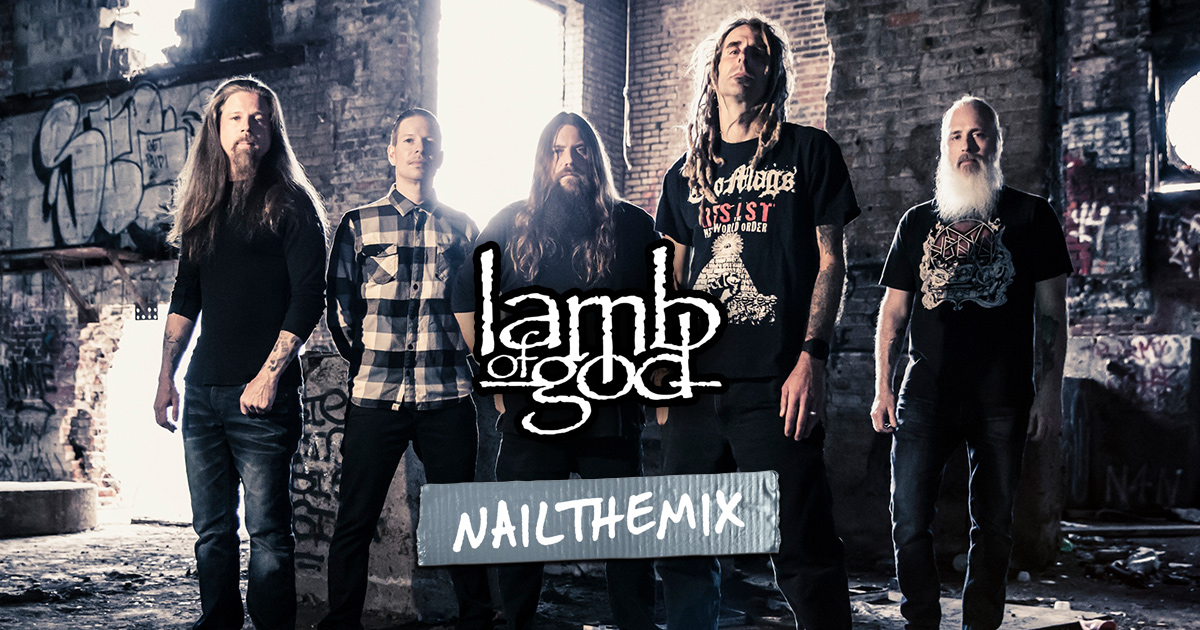
Heavy Metal Guitar: Elevating Your Tone Beyond the Cliches
Nail The Mix Staff
What really defines modern heavy metal guitar in today's landscape? If you've been around the production block, you’ve probably heard the usual takes – it’s all about seven-strings tuned to oblivion, an over-reliance on amp sims, or that "digital" sound.
Honestly, a lot of that is just scratching the surface, and frankly, some of it is outdated thinking. Modern metal guitar is so much more than low tunings or the latest plugin preset. It’s about a new level of musicianship, a smarter way of using incredible technology, and a relentless drive to push the sonic envelope.
Let’s ditch the clichés and dive into what truly makes contemporary heavy metal guitar tick, from the player's hands to the signal chain, and how you can harness that power in your own productions.
Debunking the Myths: What Modern Heavy Metal Guitar Isn't
It’s easy to fall back on old tropes. You hear a killer modern metal track, and the immediate assumptions fly. But let’s clear a few things up, because clinging to these misconceptions can hold your own guitar tones back.
Myth 1: It's ALL About Lower Tunings and More Strings
Sure, extended-range guitars are more common than ever. Seven-strings (like those favored by guitarists in bands like Korn or Periphery) are practically standard issue, eight-strings (think Meshuggah or Tosin Abasi) aren't weird anymore, and you even see nine-string behemoths. Bands are tuning down to C, G#, even E below standard E. Brands like Kiesel, Ormsby, and Strandberg are pushing innovation in this space.
However, chalking modern metal up to just low tunings is like saying '80s metal was only about whammy bars. It’s an observation, not an explanation. The real magic lies in how players use these extended ranges – the rhythmic complexity, the innovative chord voicings, and the sheer creativity they unlock. It's not a crutch for less skilled players; it's a new canvas.
Myth 2: Digital Gear Sounds "Sterile" or "Fake"
This one’s a classic, often parroted by folks whose last experience with digital was a clunky modeler from the early 2000s. Let's be real: technology has come an insane way in the last 20+ years.
Today's amp modelers and plugins are lightyears ahead. Units like the Fractal Audio Axe-Fx III, Kemper Profiler, Line 6 Helix, and Neural DSP Quad Cortex (not to mention Neural's killer Archetype plugins like Archetype: Gojira or Archetype: Petrucci) deliver tones that can stand toe-to-toe with, and often surpass, traditional tube amps in terms of realism, feel, and versatility. The idea that "digital is sterile" is an outdated blanket statement. It’s about how you use the tools, not the tools themselves.
Myth 3: It's Just "Fake" Performances and Bad Phrasing
Some critics claim modern metal players make up for a lack of musicianship with low tunings or studio trickery. This couldn't be further from the truth. The general level of technical proficiency and musical understanding among modern metal guitarists is arguably higher than it’s ever been. We're talking about players who are deeply versed in theory, rhythm, and advanced techniques.
The Real Core of Modern Heavy Metal Guitar
So, if it’s not just about low tunings and digital toys, what is at the heart of modern heavy metal guitar? It’s a combination of evolving skillsets, a deep understanding of rhythm, and the intelligent application of technology.
The Ever-Evolving Skillset: Pushing Boundaries
Modern metal guitarists are often sonic chameleons, pulling techniques from a vast array of influences. It’s not uncommon to hear:
- Hybrid Picking: Blending pick and fingers opens up new melodic and rhythmic possibilities. Think of the fluidity it can add to arpeggios or complex chordal passages. While not exclusively a metal technique, its incorporation by players pushing boundaries shows the level of dexterity involved.
- Thumping & Advanced Slap Techniques: Popularized by players like Tosin Abasi (Animals As Leaders), these percussive approaches turn the guitar into a rhythmic weapon, creating intricate grooves that are as much about feel as they are about notes.
- Flamenco-Inspired Rhythms & Fingerstyle: Look at Tim Henson from Polyphia. He’s brought a whole new vocabulary to distorted guitar, incorporating nylon-string sensibilities and complex rhythmic patterns that are incredibly sophisticated.
- Collegiate-Level Harmony & Theory: The harmonic language in much of modern metal is deeply advanced. We're talking complex chord voicings, modal interchange, and sophisticated melodic construction that goes far beyond basic power chords.
- Rhythmic Sophistication: Polyrhythms, metric modulations, and syncopation that would make your head spin are commonplace. Bands like Meshuggah and Periphery have built entire careers on pushing rhythmic boundaries.
The Unsung Hero: Your Picking Hand
If there’s one piece of advice for any guitarist looking to truly nail the modern metal sound, it’s this: develop your picking hand. This is where so much of the power, precision, and clarity comes from.
- Down-picking Endurance & Attack: The ability to consistently down-pick fast, complex rhythms with power (think classic Metallica or modern masters like Ola Englund) is fundamental. Practice with a metronome, starting slow. A great exercise is to take a simple riff and play it entirely with downstrokes, gradually increasing the tempo on your DAW's click track or a dedicated metronome like a Tama Rhythm Watch RW200.
- Alternate Picking Precision: For fluid lead lines and fast rhythmic passages, your alternate picking needs to be impeccable. Focus on economy of motion and consistent attack on both upstrokes and downstrokes.
- Gallops & Reverse Gallops: These rhythmic staples need to be tight and locked in with the drums.
- Tremolo Picking & Bursts: Developing smooth, controlled tremolo picking that can explode into aggressive bursts is key for adding intensity.
- Rhythmic Muting & Choking: Beyond palm-muting, think about how you can use your picking hand (and fretting hand) to create percussive stabs, silence notes precisely, and add dynamic interest. Learning to execute precise string mutes is crucial for cleaning up high-gain tones.
- Harmonic Rakes: Adding controlled noise and aggression with rakes across muted strings can spice up riffs.
For clarity in your picking, especially with high gain, learning to sculpt your signature sound beyond presets is essential to ensure each note cuts through without becoming harsh.
Rhythm is King: Mastering Complexity
The rhythmic prowess of modern metal guitarists is astounding. This isn’t just about playing fast; it’s about playing accurately and creatively within complex rhythmic frameworks.
- Practice to a Click, Always: Every single day. Whether it's scales, riffs, or full songs, lock it into the grid.
- Record Yourself: This is non-negotiable. Set up a simple recording chain in your DAW (Pro Tools, Logic Pro X, Reaper, Cubase, etc.), record your riffs to a click, and then look at the waveforms. Are your transients lining up with the grid? Be honest with yourself. This is how you improve and learn how to keep pick attack pristine for professional-sounding riffs.
- Internalize Polyrhythms: Don't just learn to play them; learn to feel them. Practice tapping a 4/4 pulse with one hand while playing a 3/4 pattern on your guitar, for example.
- Play Over the Bar Line: Understand how phrases can resolve or start in unexpected places, creating tension and release.
Gear & Tech: The Modern Metal Guitarist's Arsenal
The tools available today are incredible, and modern players leverage them to achieve unprecedented levels of tone and performance.
Guitars Built for the Depths (and Heights)
As mentioned, extended-range guitars are popular. But it's also about features that enhance playability and tuning stability, especially with lower tunings.
- Evertune Bridges: A game-changer for many, Evertune systems maintain perfect tuning and intonation regardless of string bending or aggressive playing – invaluable for low-tuned, high-gain riffage.
- High-Output, High-Clarity Pickups: Pickups like Fishman Fluence Moderns (known for their versatility and clarity under high gain) or offerings from Bare Knuckle Pickups (like the Juggernaut or Aftermath series) are designed to handle low tunings and complex playing without turning to mud.
Shaping Your Tone: Amps, Modelers, and IRs
The quest for the perfect heavy guitar tone is eternal.
- Classic High-Gain Amps: The legends still hold up. Peavey 5150/6505s, Mesa/Boogie Dual/Triple Rectifiers, and EVH 5150IIIs are staples for a reason. Their raw power and character are undeniable.
- Top-Tier Modelers: We've touched on them, but it bears repeating. The Axe-Fx III, Kemper Profiler, Line 6 Helix, and Neural DSP Quad Cortex offer a universe of amp tones. You can dial in a "Bogner Uberschall" model for brutal lows or a "Friedman BE-100" model for articulate aggression, all within one unit.
- Impulse Responses (IRs): IRs have revolutionized DI recording and modeler performance. Instead of relying on built-in cab sims, you can use some of the best impulse responses for metal from companies like OwnHammer, Celestion (their official digital versions), or York Audio to capture the sound of perfectly mic'd speaker cabinets.
- Actionable Tip: Try blending a Celestion Vintage 30 IR (for that classic metal midrange cut) with a Celestion G12T-75 IR (for a slightly more scooped, aggressive sound) in your IR loader. Pan them slightly left and right for a wider image.
Essential Pedals & Plugins for Heavy Tones
Your signal chain doesn't stop at the amp.
- Overdrive/Boost Pedals: Not just for more gain, but for tightening the low end and adding articulation. The classic Ibanez TS9/TS808 or Maxon OD808 are go-to's.
- Pro Tip: Standard settings are often Drive: 0, Tone: 5-7 (to taste), Level: 10. This sculpts the EQs hitting your amp/modeler, reducing flub and enhancing pick attack. The Fortin Grind is another popular, more aggressive option.
- Noise Gates: A powerful noise gate is essential for clarity and precision in high-gain setups. The ISP Decimator G String II or Fortin Zuul are industry standards. Place it after your dirt pedals but before time-based effects for best results.
- EQ Plugins: Surgical EQ is your best friend. FabFilter Pro-Q 3 is a powerhouse, but your stock DAW EQ can be just as effective if you know how to use it.
- Key EQ Moves:
- High-Pass Filter (HPF): Cut unnecessary sub-lows, typically anywhere from 80Hz to 150Hz depending on the tuning and desired chug.
- Cut Fizz/Harshness: Narrow Q cuts in the 5kHz-10kHz (or even higher) range can tame that nasty "digital fizz" or harshness without losing aggression.
- Mid-Scoop (Carefully!): The classic metal scoop (250Hz-800Hz) can make room for vocals and snare, but be judicious. Too much can leave your guitars sounding hollow.
- Key EQ Moves:
- Compression (Subtly for Guitars): While you might slam a drum bus, guitar compression is often more about evening out dynamics for consistency. Sometimes, just a touch of compression for mixing rock and metal can help riffs sit better.
- Multiband Compression: Incredibly useful for taming "flub" in palm-muted sections. Apply a multiband compressor like FabFilter Pro-MB to just the low frequencies (e.g., below 150-200Hz) of your guitars and have it only kick in on those heavy chugs to keep them tight and defined.
The Power of Self-Recording and Analysis
The accessibility of recording technology is a massive advantage for modern players.
- DAWs as Practice Tools: Don't just record songs. Record your practice. Loop difficult passages. Slow them down with pristine audio quality.
- Accessible Practice Amps/Interfaces: Tools like the Positive Grid Spark series (including the Spark NEO headphones for silent practice) integrate with apps, offer amp modeling, backing tracks, and click tracks, all controllable via Bluetooth. You can literally practice anywhere, anytime, with great tones. No excuses!

100+ Insanely Detailed Mixing Tutorials
We leave absolutely nothing out, showing you every single step
The Modern Mindset: Continuous Learning & Adaptation
Beyond the gear and techniques, what truly defines the best modern metal guitarists is their mindset.
- Leverage Online Resources: There's an unprecedented amount of knowledge available. YouTube tutorials from incredible players, forums, and online courses mean you can learn from the best, often for free or very affordably.
- Embrace "Getting Worse to Get Better": Sometimes, improving means unlearning bad habits. If you realize your picking technique is holding you back, be prepared to feel awkward and sound "worse" for a while as you rebuild it correctly. The best players do this. They analyze their weaknesses and actively work to fix them.
- Critical Monitoring: You need to hear what you're actually playing. Decent studio monitors (like the Yamaha HS series or KRK Rokits) or quality in-ear monitors (even something accessible like Shure SE215s) are crucial for both practice and recording. For live playing, systems like the Midas DP48 allow for personalized in-ear mixes, so each member hears exactly what they need to perform their best. Better playing means a better sound.
Bringing It All Together in the Mix
Crafting a killer modern heavy metal guitar tone is a huge part of the battle. But getting that tone to sit perfectly in a dense, powerful mix alongside crushing drums, thundering bass, and aggressive vocals? That’s where the real art (and science) comes in.
This is where understanding how to meticulously EQ, compress, automate, and process your guitars—often on individual tracks AND on a guitar bus—becomes paramount. Seeing how a pro takes those raw, well-recorded guitar tracks and makes them punch, cut, and gel within the context of a full song is invaluable.
If you’re serious about taking your heavy metal guitar tones from "good" to "pro-level," and then learning how to make them dominate in your mixes, you need to see how the best in the business do it. At Nail The Mix, you get exactly that: access to real multi-tracks from massive metal songs and the chance to watch world-class producers mix them from scratch, explaining every plugin, every fader move, and every decision. It's about learning to mix professional metal from your bedroom.
The Final Riff
Modern heavy metal guitar is a dynamic, evolving beast. It’s about deep musicianship, intelligent use of incredible technology, a relentless pursuit of rhythmic precision, and a commitment to continuous learning. Forget the superficial clichés. Focus on your hands, your ears, and your brain. Experiment with different gear, push your technical boundaries, and always, always record yourself and listen critically.
The tools and knowledge are out there. Go nail that tone!
Get a new set of multi-tracks every month from a world-class artist, a livestream with the producer who mixed it, 100+ tutorials, our exclusive plugins and more
Get Started for $1




